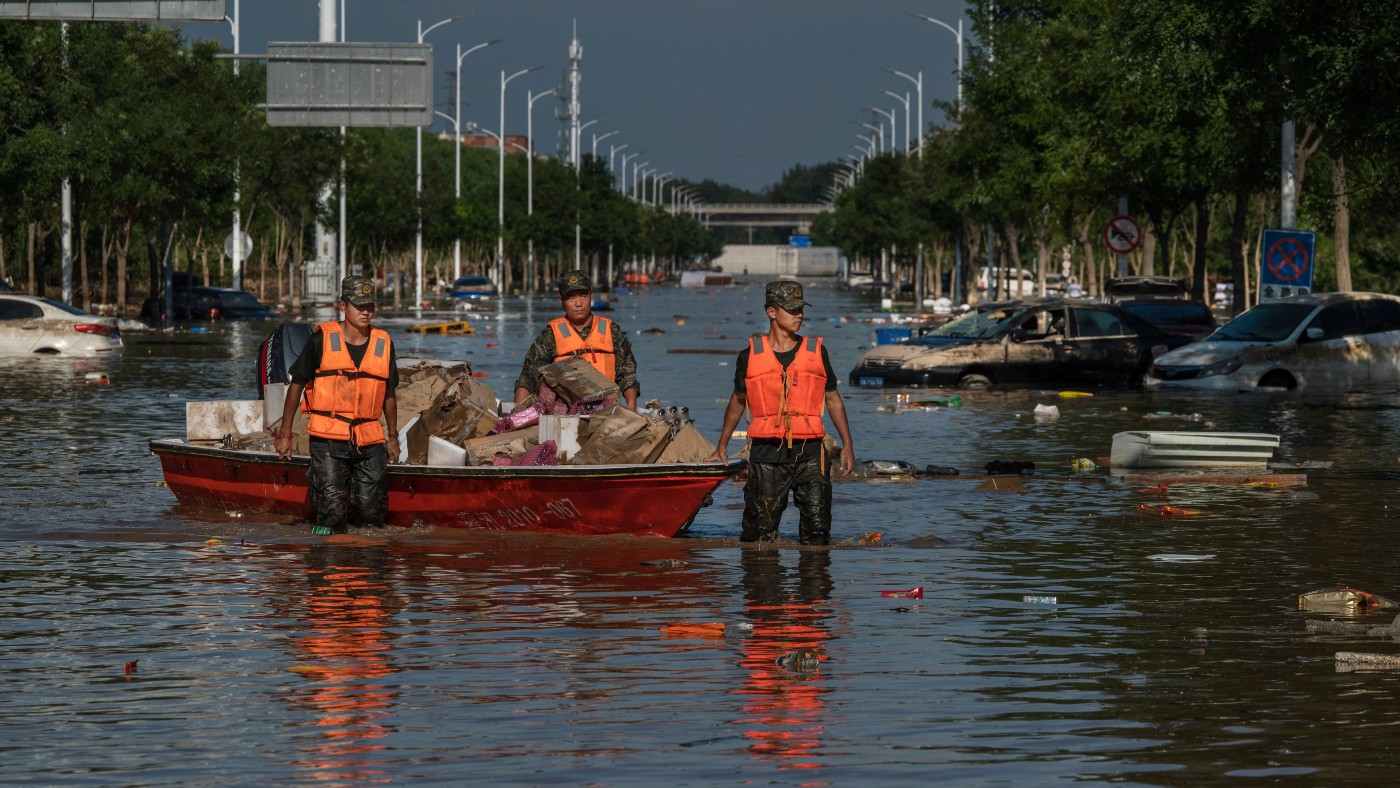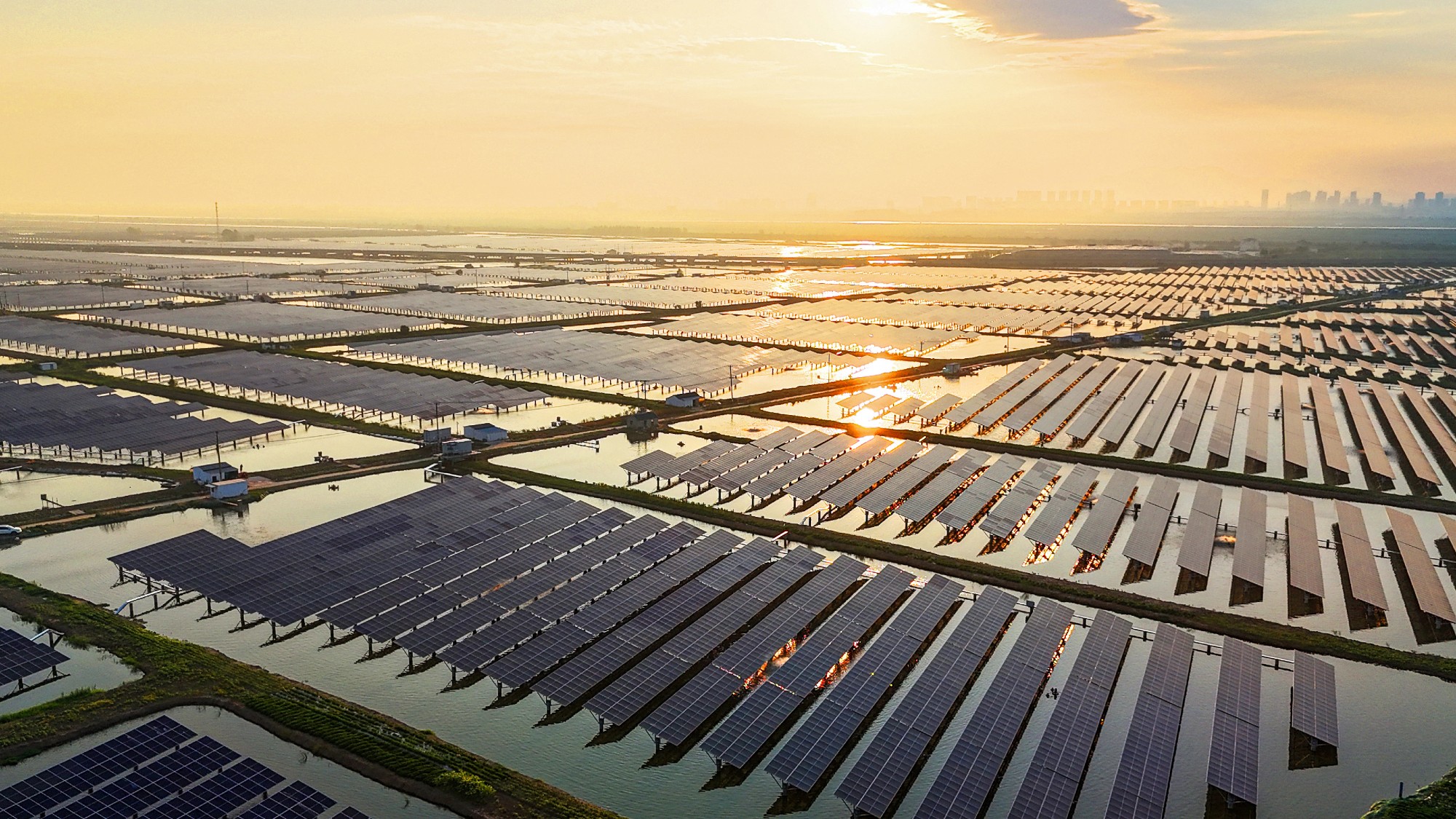Tackling climate change: is China laggard or pioneer?
Beijing remains reticent to publicly debate climate change which is consistently downplayed as a cause of recent disasters

The Hai River basin is “the largest natural drainage system in northern China”, said Channel News Asia (Singapore). It has five rivers flowing into it and it contains the capital, Beijing, as well as the major port city of Tianjin.
But that’s not a great combination, since the area is highly prone to flooding and the consequences can be dire. In 1963, the titanic rainstorms that fell on the basin killed more than 5,000 people and dislodged millions more. Yet this hasn’t deterred people from building there. A prolonged “construction boom”, most of it in low-lying areas near lakes and rivers, has meant the Hai basin is “now home to 25 large and medium-sized cities”.
Naturally, the authorities have tried to protect the area with flood defences, said James Palmer in Foreign Policy (Washington), but this was never more than a gesture, as was brought into sharp relief this month, when a powerful tropical storm, Typhoon Doksuri, made landfall in China. It brought the heaviest rain in 140 years to Beijing, killing at least 33 people and displacing 1.5 million more. The storm was so severe, officials decided to open floodgates to stop rivers bursting their banks and to protect Beijing, sacrificing thousands of homes and provoking widespread fury in the process.
The Week
Escape your echo chamber. Get the facts behind the news, plus analysis from multiple perspectives.

Sign up for The Week's Free Newsletters
From our morning news briefing to a weekly Good News Newsletter, get the best of The Week delivered directly to your inbox.
From our morning news briefing to a weekly Good News Newsletter, get the best of The Week delivered directly to your inbox.
Exceptionally vulnerable to climate change
Typhoon Doksuri, which has washed away bridges and trapped passengers on trains, is just the latest “frightening” weather event to hit China, said The Economist. In July, China’s highest-ever temperature (52.2C) was recorded in the western province of Xinjiang. In January, its lowest-ever reading (-53C) was recorded near the border with Russia. And Beijing warns of further disasters, including floods, heatwaves and wildfires to come. That such events are becoming normalised should alarm China’s leaders, whose country is “exceptionally vulnerable” to climate change. “China must sustain almost a fifth of humanity with just 7% of the world’s fresh water. Its wealthiest industrial regions are clustered along its coasts, making rising sea levels an existential menace.” And its agricultural heartlands are severely prone to flooding. Yet Beijing “seems allergic” to public debate on climate change, which in state media is consistently downplayed as a cause of recent disasters.
It’s hardly surprising when you consider China’s appalling environmental credentials, said Vijay Jayaraj in The Hill (Washington). The world’s largest emitter of carbon dioxide, it pumps out “nearly twice as much as the second-largest emitter, the US”. And it seems to be doubling down on fossil fuels: in the first six months of this year, it approved at least 50.4 gigawatts of new coal power – more than the entire coal-power capacity of Germany. To make matters worse, it’s also investing heavily in coal-fired power plants abroad, notably in Africa, as part of its “Belt and Road Initiative”, and continues to obstruct progress at global climate summits. As long as that continues, efforts by other countries to reduce their own emissions won’t make a dent in the fight against climate change.
No country is rolling out renewables faster
It’s easy to paint China as a climate villain, said Christoph von Eichhorn in Süddeutsche Zeitung (Munich), but the reality is more complex. On a per capita basis, China’s emissions are far lower than those of the US. In fact, no other country is “rolling out renewables” as fast as China, said Hannah Ritchie in The Washington Post. This year alone, it could add more solar power than the cumulative total now in place in the United States. “Last year, the increase in China’s solar and wind power nearly matched the amount of electricity used in many of the world’s major economies, including South Africa, Australia and Spain.” China is also the world’s biggest manufacturer of wind turbines, solar panels and electric-vehicle batteries; and in 2022 “every third car sold in China was electric”.
The elephant in the room is of course coal; but it’s viewed by Beijing as a stopgap, destined “to stand in when solar and wind production are low”. Sure, much of this is driven by self-interest: the desire for energy independence, and the chance to be a global leader in the field. “But in climate terms, it doesn’t matter why countries reduce their carbon emissions, only that they do.”
A free daily email with the biggest news stories of the day – and the best features from TheWeek.com
-
 How will China’s $1 trillion trade surplus change the world economy?
How will China’s $1 trillion trade surplus change the world economy?Today’s Big Question Europe may impose its own tariffs
-
 ‘Autarky and nostalgia aren’t cure-alls’
‘Autarky and nostalgia aren’t cure-alls’Instant Opinion Opinion, comment and editorials of the day
-
 Japan’s Princess Aiko is a national star. Her fans want even more.
Japan’s Princess Aiko is a national star. Her fans want even more.IN THE SPOTLIGHT Fresh off her first solo state visit to Laos, Princess Aiko has become the face of a Japanese royal family facing 21st-century obsolescence
-
 Death toll from Southeast Asia storms tops 1,000
Death toll from Southeast Asia storms tops 1,000speed read Catastrophic floods and landslides have struck Sri Lanka, Indonesia, Thailand and Malaysia
-
 Can for-profit geoengineering put a pause on climate change?
Can for-profit geoengineering put a pause on climate change?In the Spotlight Stardust Solutions wants to dim the sun. Scientists are worried.
-
 How will climate change affect the UK?
How will climate change affect the UK?The Explainer Met Office projections show the UK getting substantially warmer and wetter – with more extreme weather events
-
 Can the UK do more on climate change?
Can the UK do more on climate change?Today's Big Question Labour has shown leadership in the face of fraying international consensus, but must show the public their green mission is ‘a net benefit, not a net cost’
-
 Did Cop30 fulfil its promise to Indigenous Brazilians?
Did Cop30 fulfil its promise to Indigenous Brazilians?Today’s Big Question Brazilian president approves 10 new protected territories, following ‘unprecedented’ Indigenous presence at conference, both as delegates and protesters
-
 Can the world adapt to climate change?
Can the world adapt to climate change?Today's Big Question As the world gets hotter, COP30 leaders consider resilience efforts
-
 Taps could run dry in drought-stricken Tehran
Taps could run dry in drought-stricken TehranUnder the Radar President warns that unless rationing eases water crisis, citizens may have to evacuate the capital
-
 The future of the Paris Agreement
The future of the Paris AgreementThe Explainer UN secretary general warns it is ‘inevitable’ the world will overshoot 1.5C target, but there is still time to change course